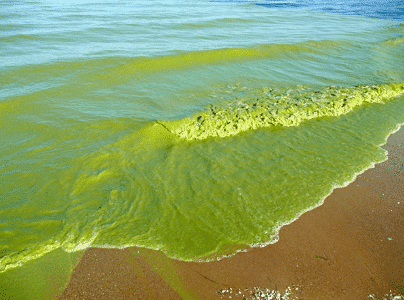Scary neurotoxin found in blue-green algae blooms, connected to ALS and Alzheimer’s

 Was a neurotoxin found in blue-green algae?
Was a neurotoxin found in blue-green algae?
Florida’s coastline is once again coated with the bright green slime known as blue-green algae, with a state of emergency declared in four counties in attempt to control the spread of the avocado-thick goop which is spoiling beaches and creating a serious health hazard.
“This is absolutely the worst,” says Evan Miller, environmental activist and citizen of the town of Stuart, 177 kilometers north of Miami. “We’ve never seen algae so thick. You can see it from space. There are places in Stuart that are on their third and fourth cycle of blooms now.”
While blue green algae, or cyanobacteria, is found naturally in most bodies of water in North America – forming particularly in shallow and still waters and lakes in the warmer summer months -the output of nutrients like phosphorus which feed the growth of algae blooms has caused the green gunk to become much more present in recent years.
An increasingly warmer climate is only worsening the problem worldwide. Already in eastern China, authorities have observed some of the largest algae blooms on record, while Australia’s Murray River has seen a 600-mile stretch covered in algae bloom.
Scientists have known for some time that toxins are released from algae blooms when the bacterial cells break open or die. Exposure to cyanobacteria toxins results in symptoms such as skin irritation to headaches, fever, nausea and vomiting. But more recent research has revealed that cyanobacteria can produce neurotoxins and contribute to the onset of the neurodegenerative disease ALS (amyotrophic lateral sclerosis). Particularly, a lesser known toxin produced by cyanobacteria called BMAA is now getting more attention, due to the potential link between it and neurodegenerative diseases like ALS, Alzheimer’s and Parkinson’s disease.
One researcher from the University of Miami believes that there is much we still don’t know about cyanobacteria and the soup of toxins it can emit and that BMAA needs to be more widely studied and tested for in cyanobacteria-infused waterways.
“There’s good reason to believe that there are a bunch of other toxins in these blooms of cyanobacteria which have not been discovered which can also have long term health effects,” says Larry Brand of Miami’s Department of Marine Biology and Ecology.
While still a hypothesis at the moment, researchers are beginning to focus on the potential connection between exposure to BMAA and neurodegenerative diseases. “Hundreds of millions of dollars have been spent looking for predisposing genes, but…there is really a need to concentrate much more on environmental toxicants,” says Walter Bradley, an ALS expert and former chair of neurology at the University of Miami Miller School of Medicine.
A report by the University of Alberta found the cyanobacteria toxin microcystin has been identified in 246 water bodies in Canada, with the toxin detected in every province. Saskatchewan’s Water Security Agency recently released an advisory warning to citizens about blue-green algae blooms that have formed across the province this summer. Recent tests of Florida waterways have determined that the cyanobacteria outbreak has released airborne contaminants at concerning levels, including hydrogen sulfide and microcystin.
Martin County ecosystem manager Deborah Drum says that the algae blooms are putting out toxins at levels, “I never dreamed we’d see.”

